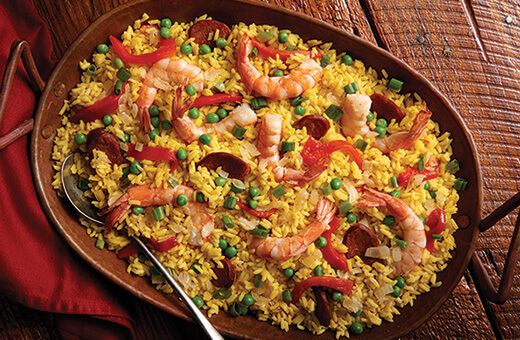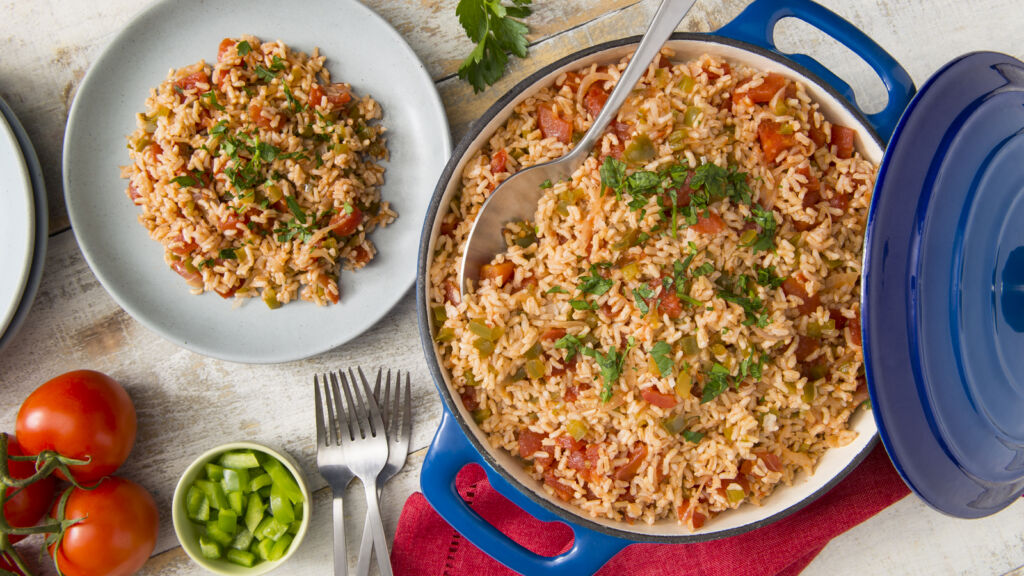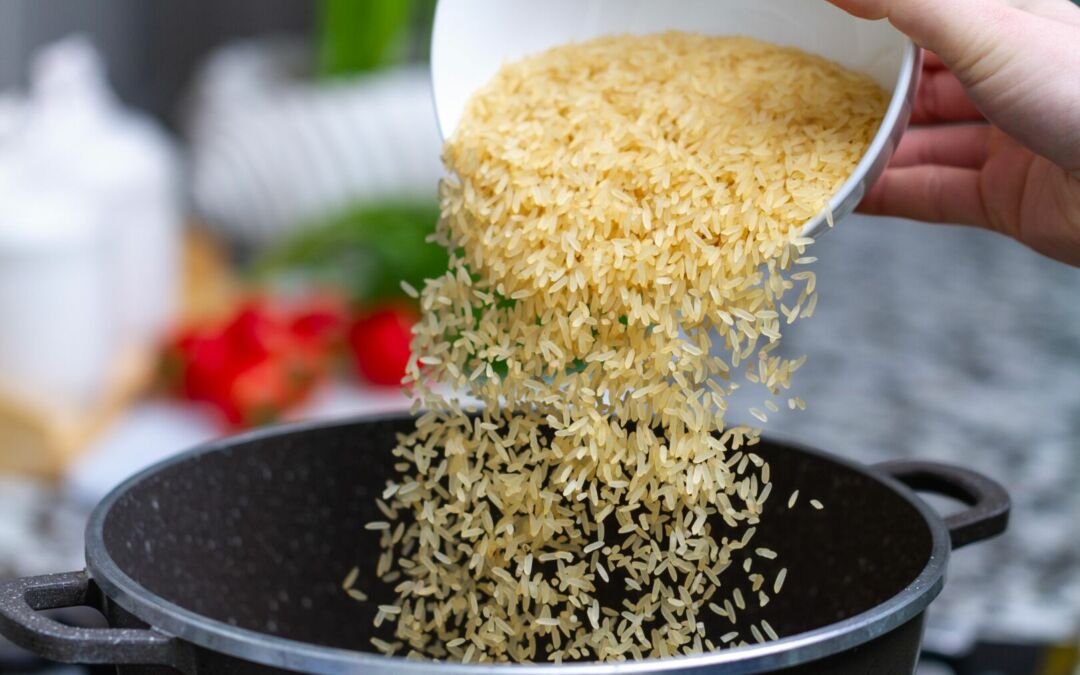There’s a reason rice is the most widely-eaten food in the world: it’s inexpensive, commonly available, easy to store for long periods, and most importantly, it’s incredibly versatile! From skillets to casseroles, to soups and salads, the possibilities are truly endless. Whatever your diet and preferences are, you are sure to create delicious meals from the easiest rice and chicken combo to a tricky mushroom risotto.
However, for anyone who has had mushy rice or their dish just didn’t turn out how they expected, there are a few common mistakes most people make when cooking rice without even realizing it. So, we’ve made a list of those mistakes to take out the guess-work and make it easier to get perfectly cooked grains for all of your favorite rice dishes!
From using too much liquid to over-stirring, we’re here to give you some pointers on what not to do.
1. Underestimating Differences Between Rice Varieties
Using the wrong rice is mistake number one.
Although some rice varieties can be used interchangeably, the reality is that choosing the right type of grains for your dish can truly make or break your meal. For best results, you want to choose rice that cooks in a way that compliments your ingredients. Different types of rice have different textures, flavors, and different abilities to absorb other ingredients’ flavors so the type of rice you use does actually make a difference. Take a look at our guide for what type of rice you can use in your rice dishes:
Sushi
If your goal is to make sushi, you’ll want to use short grain rice as it tends to be softer and sticks together, which is exactly what you want so that your sushi roll will hold together.
Fried Rice and Stir Fry
For meals like stir-fry or fried rice, you want to use Extra Long Grain White or Jasmine Rice as these grains stay separate without sticking and are great for absorbing the flavors of the other ingredients. This Ginger Pork Fried Rice is made with our Mahatma® Long Grain & Jasmine Rice Blend and is a perfect example of what the right kind of rice can do for a dish.
Risotto
For an authentic Italian risotto, you want to use Mahatma® Medium Grain Arborio Rice as it cooks to a perfectly creamy texture, which is exactly what you want in a properly cooked risotto. Some may say that for the creamiest rice puddings out there, this Authentic Grains rice variety works wonders.
Paella
If you’re making a Spanish-inspired cuisine or paella, go with Mahatma® Parboiled Medium Grain Rice which has partially been cooked in the inedible husk and then removed to help maintain higher content of the nutrient filled original grain. This variety cooks up tender and slightly chewy with a delicious taste! For more tips on how to perfect your paella, make sure to follow our guide.

Whole Grains Alternative
To add more whole grains and a nuttier, more earthy flavor to your dishes, use Mahatma® Organic Brown Rice. While all rice is naturally filled with vitamins and minerals, brown rice has its inedible hull removed with the germ and bran layer intact, giving it more dietary fiber and its whole grain properties.
Learning to choose the right rice is one more step on your way to becoming a rice pro!
2. Rinsing and Soaking Rice
To rinse or not to rinse? That is the question. We say, don’t make mistake number two by not checking whether you should rinse the rice or not. Most white rice produced in the US is thoroughly washed then fortified with vitamins and other nutrients, which appear as a dusty layer on the individual grains. If you want to preserve those nutrients, do not rinse.
However, for certain rice varieties it is helpful to wash the rice, affecting the final texture for short grain varieties like sushi rice. Soaking and rinsing rice is generally an optional step, but can help preserve natural flavor with rice types, such as Basmati Rice. Soaking rice will allow the rice to absorb some of its water at room temperature. Because some of the water has soaked in, the cooking time is lessened to produce extra-long, slender grains that are light and fluffy.
We’ve made a helpful chart so you don’t make the mistake of rinsing or soaking before cooking if it is not necessary.
| Short Grain Rice: Sushi Rice | Rinse rice |
| Medium Grain Rice: Paella, Risotto | Do not rinse rice |
| Long Grain Rice: Jasmine, White, Brown | Do not rinse rice |
| Long Grain Rice: Basmati | Rinse rice |
Try these Enchiladas with Salsa Verde using unrinsed long grain White Rice and taste the difference of the fluffy grains topped with oven-baked enchiladas in a homemade sauce.
3. Ignoring the Water-to-Rice Ratio
Now that you have chosen the right kind of rice and it is rinsed and ready to cook, don’t make mistake number 3 and “eyeball” your measurements. Having the right liquid to rice ratio is vitally important to making the perfect rice.
We’d love to tell you that getting the right liquid to rice portion is as easy as a “golden ratio” that applies to all rice, but that’s unfortunately not the case.

What is fortunate, though, is that all you have to do is pay close attention to the preparation instructions and put your energy into precise measurements and not portion guess-work. For instance, you need almost twice as much water for brown rice than you would for a jasmine rice recipe. This step is incredibly important as too little liquid can result in dry or even burnt rice, and too much liquid can result in a mushy mess. Definitely not something you want when making a recipe like this Spanish Brown Rice or a Mexican Yellow Rice.
You’ll want to make sure you are using the right amount of liquid for the type of rice you are cooking and for your cooking method. Here’s a useful chart on the liquid to rice ratio for the stovetop method.
- White Rice: 2 cups of water per each cup of rice (2:1)
- Brown Rice: 2¼ cups of water per each cup of rice (2¼:1)
- Basmati Rice: 1¾ cups of water per each cup of rice (1¾:1)
- Jasmine Rice: 1½ cups of water per each cup of rice (1½:1)
Caution: liquid to rice ratios may vary depending if you cook your grains on the stovetop or in the microwave. As long as you follow the cooking instructions and pay close attention to your measurements, you can make perfectly cooked rice for all of your rice dish needs.
4. Stirring Too Much
It’s tempting to want to stir things on the stove to avoid things from burning or overcooking at the bottom. If this is what you’re doing when cooking your rice, you are making rice faux pas number four. Once you’ve brought the rice to a boil, it is crucial that you lower the heat and let it simmer on low, covered, and undisturbed until done. Even after you’ve removed it from the heat, you’ll want to let it sit for another 5 minutes or so.
Uncovering and stirring the rice once it has started cooking breaks up the grains resulting in rice that is gummy and not the best texture. Letting it sit for 5 minutes after you’ve removed it from the heat lets the grains set and you’ll want to gently fluff them with a fork to ensure the grains remain light and fluffy. We know that the temptation to stir is strong, but avoid it all costs!
Now that you know what not to do with your rice, try this Spicy Cajun Jambalaya made with our White Rice and see how much better your rice dishes taste when avoiding all of these common mistakes. Also, check out how to make tacos dorados and this arroz con leche recipe.
Food that #Feelslikehome
Whether you’re cooking for family or friends, nothing beats a home-cooked meal for warmth and comfort. At Mahatma® Rice we believe that making new and exciting recipes doesn’t have to be a daunting experience. Always wanted to make your own sushi but didn’t know how? No problem! Our California Sushi Bowl is the perfect place to start.
Planning a dinner party and not sure what to serve as an appetizer? Enter our irresistible Arancini Air-Fryer Italian Rice Balls. Crispy and cheesy, this is the kind of appetizer that could potentially steal the show at your next gathering.
Got a barbecue coming up and want to serve a well-rounded dish to everyone? These BBQ Chicken Skewers with Chipotle Rice offer the winning combo of succulent barbecue chicken with spicy Mahatma® Ready to Heat Chipotle Jasmine Rice. The result? A perfectly balanced, low-fuss BBQ dish for every occasion.
So whenever you’re in need of a little culinary inspiration, you can always count on us. Drop by our kitchen to see what we’ve been cooking.
